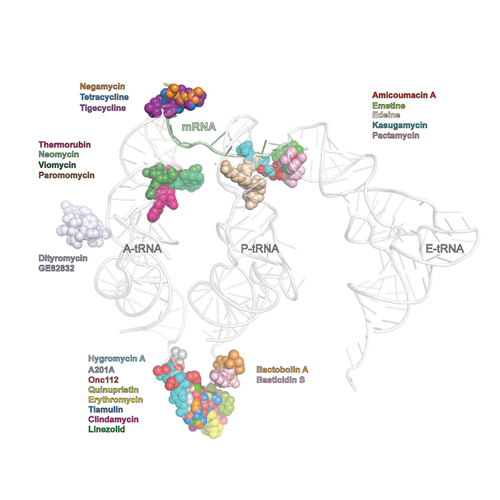Blast from the Past: Reassessing Forgotten Translation Inhibitors, Antibiotic Selectivity, and Resistance Mechanisms to Aid Drug Development
12-Nov-2015
Molecular Cell, Volume 61, Issue 1, p3–14, http://dx.doi.org/10.1016/j.molcel.2015.10.019
Molecular Cell, online article
Protein synthesis is a major target within the bacterial cell for antibiotics. Investigations into ribosome-targeting antibiotics have provided much needed functional and structural insight into their mechanism of action. However, the increasing prevalence of multi-drug-resistant bacteria has limited the utility of our current arsenal of clinically relevant antibiotics, highlighting the need for the development of new classes. Recent structural studies have characterized a number of antibiotics discovered decades ago that have unique chemical scaffolds and/or utilize novel modes of action to interact with the ribosome and inhibit translation. Additionally, structures of eukaryotic cytoplasmic and mitochondrial ribosomes have provided further structural insight into the basis for specificity and toxicity of antibiotics. Together with our increased understanding of bacterial resistance mechanisms, revisiting our treasure trove of “forgotten” antibiotics could pave the way for the next generation of antimicrobial agents











